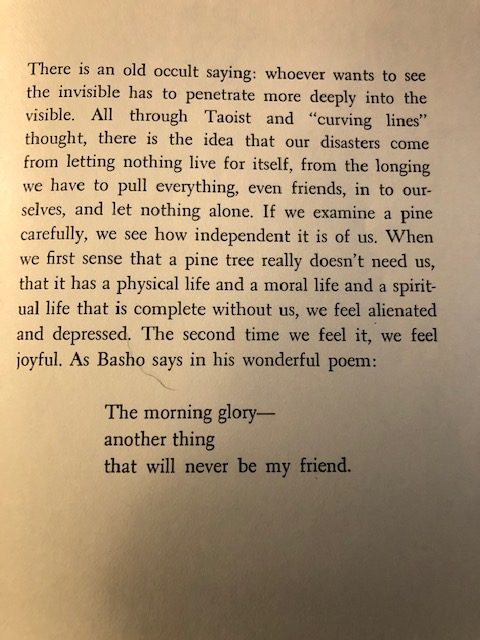–
I wasn’t a big reader as a kid. I don’t have memories of reading any “literature” or novels. It was mostly the sports pages in the newspaper — those were the first writers I loved — Dick Young, Phil Pepe — the guys who covered the Mets, Jets, Knicks. And I read random sports biographies here and there, but not often.
When I became more of a reader, it was a direct jump into adult writers: Vonnegut, Bradbury, Brautigan. So as you might imagine, I
have these huge gaps in the field of children’s literature. From time to time, I play catch up, tossing a shovelful of dirt into a gaping crater.
–

–
Which is to say that now, at age 58, I’m reading Harriet the Spy by Louise Fitzhugh.
I liked this exchange between Sport and Harriet early on in the book:
–
Sport tucked the football under his arm and walked over to her. “That’s nothing but an old tree root. Whaddya mean, a mountain?”
“That’s a mountain. From now on that’s a mountain. Got it?” Harriet looked up to his face.
Sport moved back a pace. “Looks like an old tree root,” he muttered.
Harriet pushed her hair back and looked at him seriously. “Sport, what are you going to be when you grow up?”
“You know what. You know I’m going to be a ball player.”
“Well, I’m going to be a writer. And when I say that’s a mountain, that’s a mountain.” Satisfied, she turned back to her town.
–
There’s much to admire in this little bit of dialogue. The wit, the charm, the realistic cadences. You know what. But something I try to show young writers — a lesson that took me years to learn in my own work — is the simple effectiveness of all those brief descriptive tags that make the conversation come alive.
The bulk of most books, of most writing, is made up of characters talking. Conversations floating in space. The trick is to ground those conversations in a concrete reality. They are playing putt-putt golf. Fishing on a boat. Hiking up a mountain. Sitting on a park bench. Running from zombies. Or, in the example above, squatting by a big tree, with Harriet bending over her notebook. Sport is tossing a football in the air. The scene is set.
Let’s read it again without those very simple descriptive sentences. That is, all dialogue:
–
“That’s nothing but an old tree root. Whaddya mean, a mountain?”
“That’s a mountain. From now on that’s a mountain. Got it?”
“Looks like an old tree root.”
“Sport, what are you going to be when you grow up?”
“You know what. You know I’m going to be a ball player.”
“Well, I’m going to be a writer. And when I say that’s a mountain, that’s a mountain.”
I find that when I’m inspired, I’ll often begin this way in my notebook. Hearing the voices, scribbling down the conversation. Writing only what is said. But how does a reader see what’s going on? It’s those simple little sentences that I’ve come to admire so much. He set the hat on the table. He flicked a pebble with his thumb. She leaned forward. Whatever.
One more time, highlighting what Fitzhugh does here to help us see the people in this conversation:
–
Sport tucked the football under his arm and walked over to her. “That’s nothing but an old tree root. Whaddya mean, a mountain?”
“That’s a mountain. From now on that’s a mountain. Got it?” Harriet looked up to his face.
Sport moved back a pace. “Looks like an old tree root,” he muttered.
Harriet pushed her hair back and looked at him seriously. “Sport, what are you going to be when you grow up?”
“You know what. You know I’m going to be a ball player.”
“Well, I’m going to be a writer. And when I say that’s a mountain, that’s a mountain.” Satisfied, she turned back to her town.
There’s nothing fancy about those sentences. They don’t get in the way, don’t draw attention to themselves. Harriet looked up to his face. Anybody can write that. All you have to do is imagine it. The writer has to see it and, here’s the trick, recognize that the reader doesn’t. Or can’t. Or won’t — not without help.
One other sidenote: Fitzhugh doesn’t use much standard attribution here. Only once, with “he muttered.” The way she indicates who is talking, and it’s never confusing, is through these simple descriptive sentences.
–
Mrs. Garcia shook her head. “I do the best I can.” [from Jigsaw Jones: The Case of the Hat Burglar]
–
A writer doesn’t need to add, she said, because after you’ve included that descriptive sentence, it’s already obvious who is speaking.
Anyway, I didn’t intend to turn this into a writing lesson when I began this post. Just wanted to share a line from the book, one that resonated with me: I’m going to be a writer. And when I say that’s a mountain, that’s a mountain.
No reader can argue with that.
And this, Dear Reader, is the end.
–
–
–











